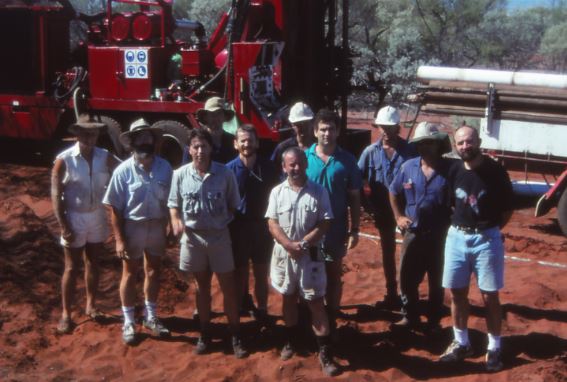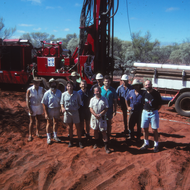Discovery rekindles debate on size of meteorite impact crater
| Date: | Friday, 21 December 2018 |
|---|
The recent discovery of one of the world’s rarest minerals in Western Australia has rekindled scientific interest in one of the largest meteorite impact craters in Australia.

When a Curtin University researcher found reidite earlier this year in a core sample provided by the Geological Survey of Western Australia (GSWA), it was the latest development in a geological mystery that has intrigued GSWA scientists since the late 1990s.
School of Earth and Planetary Sciences Honours student Morgan Cox found minute grains of reidite in granitic rocks drilled by GSWA in 1999 at the Woodleigh Crater near Shark Bay, about 750km north of Perth.
Reidite is formed from the mineral zircon only under the extreme pressure generated when a very large meteorite impacts the Earth, and this is the first time reidite has been found in Australia.
“Most importantly, this is also the first time that reidite can be related to impact deformation features in the host zircon crystals, which aids our understanding of the complex processes involved in forming an impact crater,” GSWA Geochronology and Geochemistry Manager Dr Michael Wingate said.
The discovery also suggests that because of the enormous impact pressures needed to form reidite from zircon when a large meteorite smashes into the Earth, the crater could be greater than 100km in diameter.
Dr Michael Wingate, who is a member of the Curtin team studying the Woodleigh crater, said that this would make it one of the largest confirmed impact craters in Australia.
“In early 2018, GSWA provided zircon samples and geochronology results, plus other information, to Morgan Cox and her supervisor, Dr Aaron Cavosie, at Curtin University, so that they could investigate the impact further,” Dr Wingate said.
“Finding reidite is significant scientific discovery that helps us to better understand what happens during a major impact event.”
GSWA Senior Geologist Dr Arthur Mory said that the Woodleigh crater story began in 1981 when a company exploring for hydrocarbons drilled a shallow well in the centre of the structure that intersected granite at 170m.
Nearly 20 years later, GSWA geophysicist Robert Iasky came across the company’s report while reassessing the region’s geophysical data and thought that features in the company’s thin sections of granite, which had previously been dismissed as the effects of drilling, could be related to a meteorite impact.
Dr Mory was one of a number of GSWA scientists who successfully argued for funding to drill at Woodleigh to establish if it was a buried impact crater.
He was also a member of the GSWA team involved in drilling three wells at Woodleigh in 1999, a tough job carried out in 46-degree heat.
Dr Mory said that it was initially believed the crater, buried beneath more than 100m of sediment, was about 18km across.
Later regional studies by GSWA in 2000 pointed to a diameter of about 120km and an age close to the Devonian–Carboniferous boundary of around 360 million years (Ma).
“It was not until Geoscience Australia ran a seismic line in 2011, and acquired new aeromagnetic data over the area in 2012, that it became clear that the structure is closer to 50km across,” Dr Mory said.
Dr Wingate said that the age of the Woodleigh impact was best estimated from the age of sedimentary rocks deposited in a lake that filled the crater soon after impact.
“They are believed to be earliest Jurassic – about 200Ma old – based on studies of pollen,” he said.

